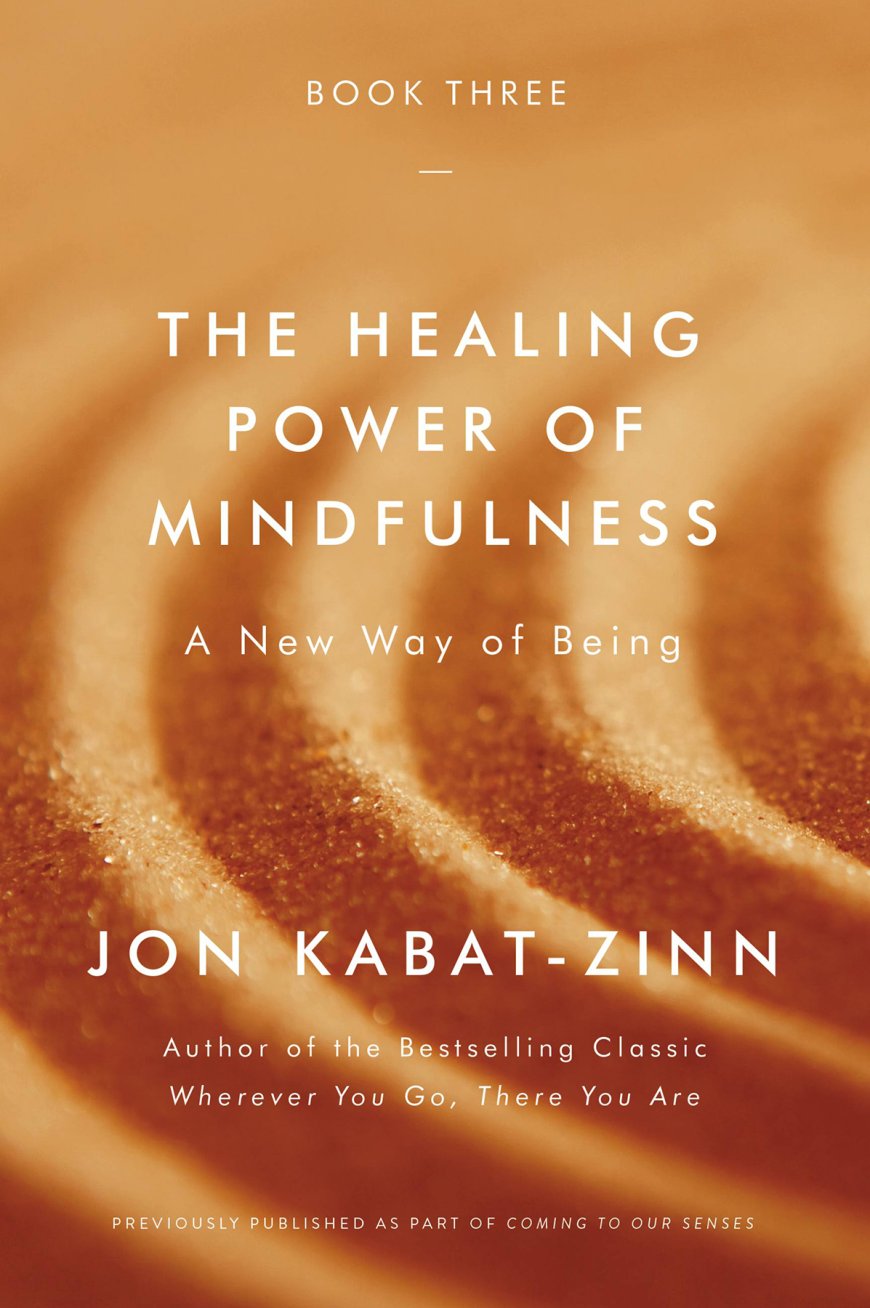The Healing Power of Mindfulness-Jon Kabat-Zinn
Coping with psychological disorders such as stress, depression, and anxiety can be difficult. These prevent us from experiencing our daily lives. We don't even notice the smell of flowers while walking on the road. The thoughts swirling around in our minds are constantly repeating in the form of a broken record. Sometimes we open autopilot mode, that is, by minimizing awareness. Jon Kabat-Zinn cites mindfulness practices that are good for this autopilot, reducing thoughts, stress, and pain.
First of all, what is Mindfulness? It is accepting without judgment what we notice while paying attention to what is happening in the present moment. It is when you realize the stress you experience in a very stressful moment. It is being able to say “I see you are here, I accept what I am going through right now” instead of removing the stress. Mindfulness doesn't offer you the magic touch of "5 Ways to Relieve Stress". It tells you to recognize stress, accept it, and then let it come and go. It is used to stay with and regulate compelling emotions and situations, and to ensure well-being. Instead of focusing on stress, it advises you to turn your focus on yourself for a while, and that your thoughts come and go. How? Are our thoughts ephemeral? Thoughts are temporary guests and we are the ones who force them to sleep over.
Jon Kabat-Zinn develops the 8-week Mindfulness-Based Stress Reduction Program (MBSR) and the Mindfulness-Based Cognitive Therapy Program (MBCT) as ways to reduce stress. This program complements the medical treatments people receive. This program is carried out in groups. I think it can be better understood if we give an example from a group of Jon Kabat-Zinn's Stress Reduction Clinic that is mentioned in the book. In the MBSR group, there are clients who experience various conditions such as anger attacks, panic attacks, migraine attacks, body aches, and AIDS. For 8 weeks, they practice mindfulness practices such as body scanning, mindful eating, mindful yoga, and meditation both inside and outside the classroom. In fact, the basis of mindfulness is resting our minds from thoughts for a while, without judging. You rest your mind by just existing for a while, doing nothing. According to research, people who complete the 8-week program change their stress management style. Anger attacks, migraine, panic attacks, and chronic body pains are reduced. Because people learn to listen to their body, breathe and control stress in times of stress. In a study conducted at Massachusetts General Hospital and Harvard University, it is observed with fMRI that these programs thicken different parts of the brain in terms of learning, memory, emotion regulation, perspective, self-compassion, and self-esteem (we can say healing). These programs are implemented by companies such as Google, Apple, and Lululemon.
The book explains these programs in a very descriptive way. It details the practices we can apply ourselves. In fact, they are practices that will not take much of our time and that we can easily apply to our daily lives. For example, sitting and walking meditations. Thanks to this book, I learned that meditation is not just sitting in a quiet environment. When we apply these practices to our own lives, instead of suppressing stress, we are aware of "How can I make it better?" You focus on the question.
Think about it… We are always worried about something. We focus so much on the anxiety that sometimes we perceive that the coffee is hot on our tongue. We realize how small the problem we are stressing is after that problem has passed. Until we realize it, we keep our brains in a box. If you wish, let's do a little mindful practice together.
Take a raisin, olive, or fruit in your hand.
Place the raisins you bought in the palm of your hand.
Examine the inside of your palm.
Then hold the grape with your fingers and examine its structure.
Tap. Hold on to the light.
Examine how its color changes in the light, and how it darkens when you hold it.
Squeeze the raisins with your fingers.
Take it to your right and left ears. Listen to your voice.
Take it to your nose, and smell it.
Touch it to your lips. Tap with your tongue. Put it on your tongue. Pass it in your mouth without chewing. What kind of structure does it have? Your mouth may water, you may want to chew, you may want to swallow. Bite lightly, and feel the flavor spreading. Now you can chew as much as you want. What did you feel?
Congratulations, you have accomplished your first food meditation!
What's Your Reaction?




















































































